The Pyrenees are known for the steep mountains and for the landscapes full of gorgeous forests rich in biodiversity. Nothing inspires me more to travel than photography and the possibility to explore new habitats and species, so I couldn’t finish this adventure without, at least, try to capture the incredible landscapes and the local fauna.
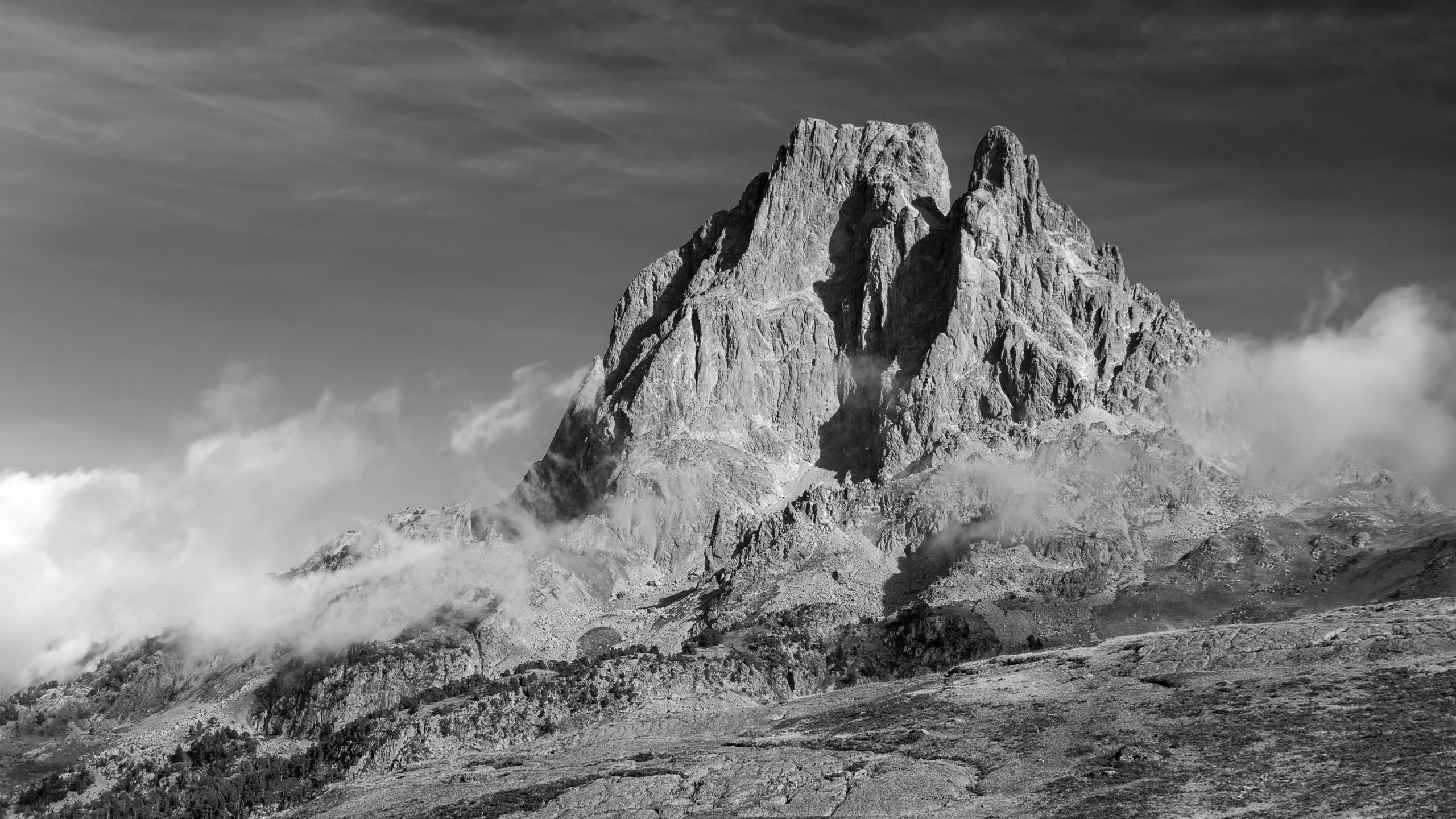
For the first day I had planned a hike, starting at the Lac de Bious-Artigues and ending at the Ayous refuge. The objective was to photograph the Pic du Midi d’Ossau, a mountain with a maximum altitude of 2884 m, of steep slopes that stands out from the surrounding landscape. The trail was steep and challenging, especially with some kilos of gear in the bag. After walking for some time surrounded by a beautiful forest dominated by conifers, I was rewarded with an impressive view to the Pic du Midi d’Ossau. When I finally arrived at the refuge, I was even more impressed by what was in front of my eyes. A lake reflecting the sunset light and, in the background, remained the imposing peak. “This is perfect” I thought. However, fog started forming while the sun went down.
On the next day, before the sunrise, I went back to the lake hoping for better conditions. Due to the negative temperatures, the soil was completely frozen and a gentle breeze stirred the water of the lake. Everything was almost perfectly aligned and finally I got an image that I’m quite proud of.
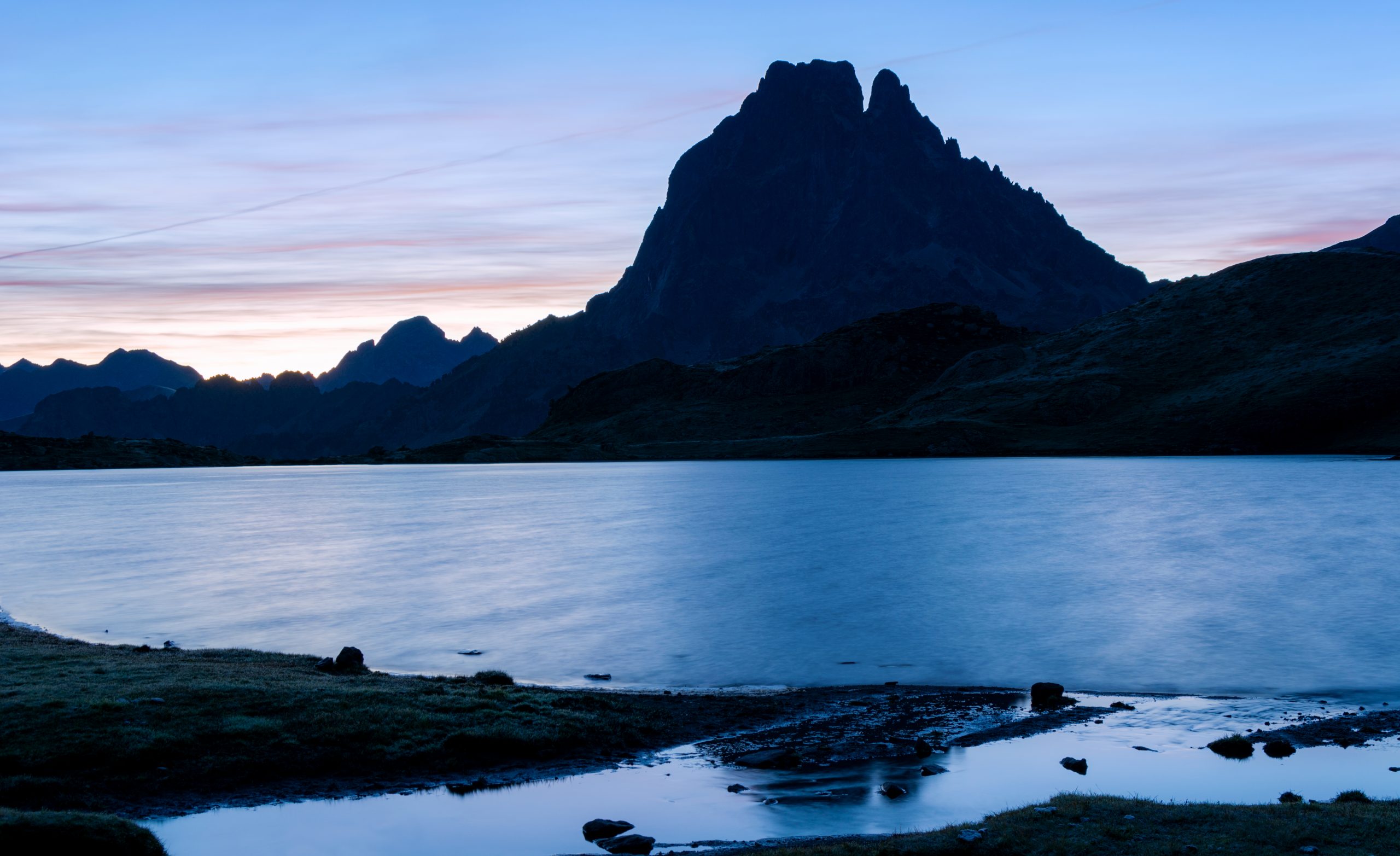
I continued the hike hoping to see some emblematic species from the Pyrenees. As I progressed I saw some griffon vulture (Gyps fulvus), while several red-billed choughs (Pyrrhocorax pyrrhocorax) were flying around. But it was later that I finally saw something that left me astonished, alpine marmots (Marmota marmota). They were harvesting vegetation to line their burrows to hibernate. Slowly they approached me and I was able to photograph them.
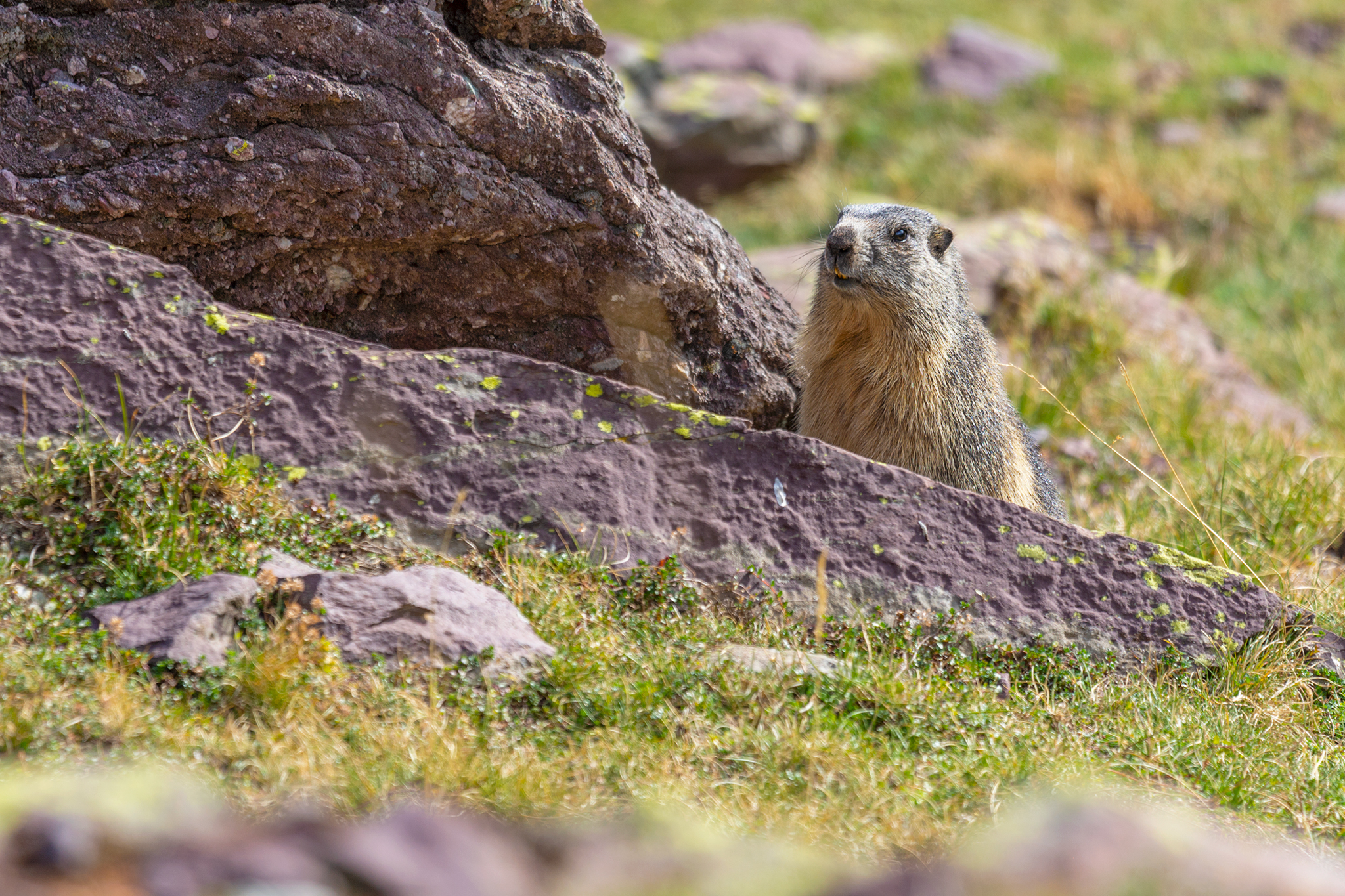
Shortly after, I saw a silhouette in the sky. At first, I thought it was another griffon vulture, but I quickly realized that it was a bearded vulture (Gypaetus barbatus), a species that went extinct in Portugal in the XIX century.
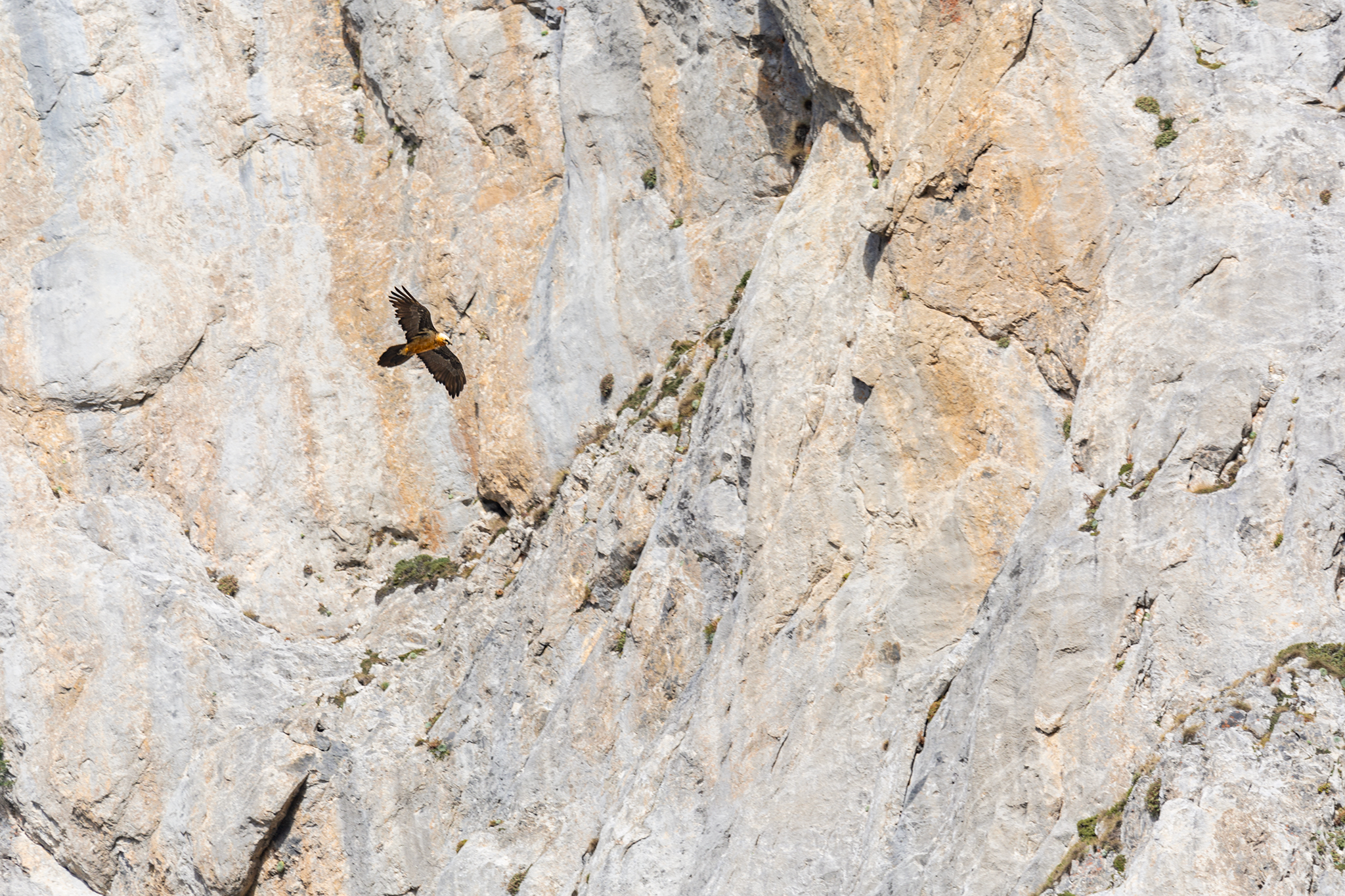
On the third day I decided to go to the cirque de Gavarnie. I have never felt so small, the huge walls of this place reach 1500 m of height from the base of the valley. A gigantic waterfall of more than 420 m can be seen from distance. In the valley, besides areas of pasture, there are also forests, some dominated by conifers (typical of climates of altitude), but others dominated by oak trees. This area is great to photograph mammals, as foxes, but unfortunately I didn’t see any. Several autumnal flowers, mostly of the Crocus genus covered the pasture fields, but it was the Campanula cochleariifolia that had my attention in the heart of the forest.
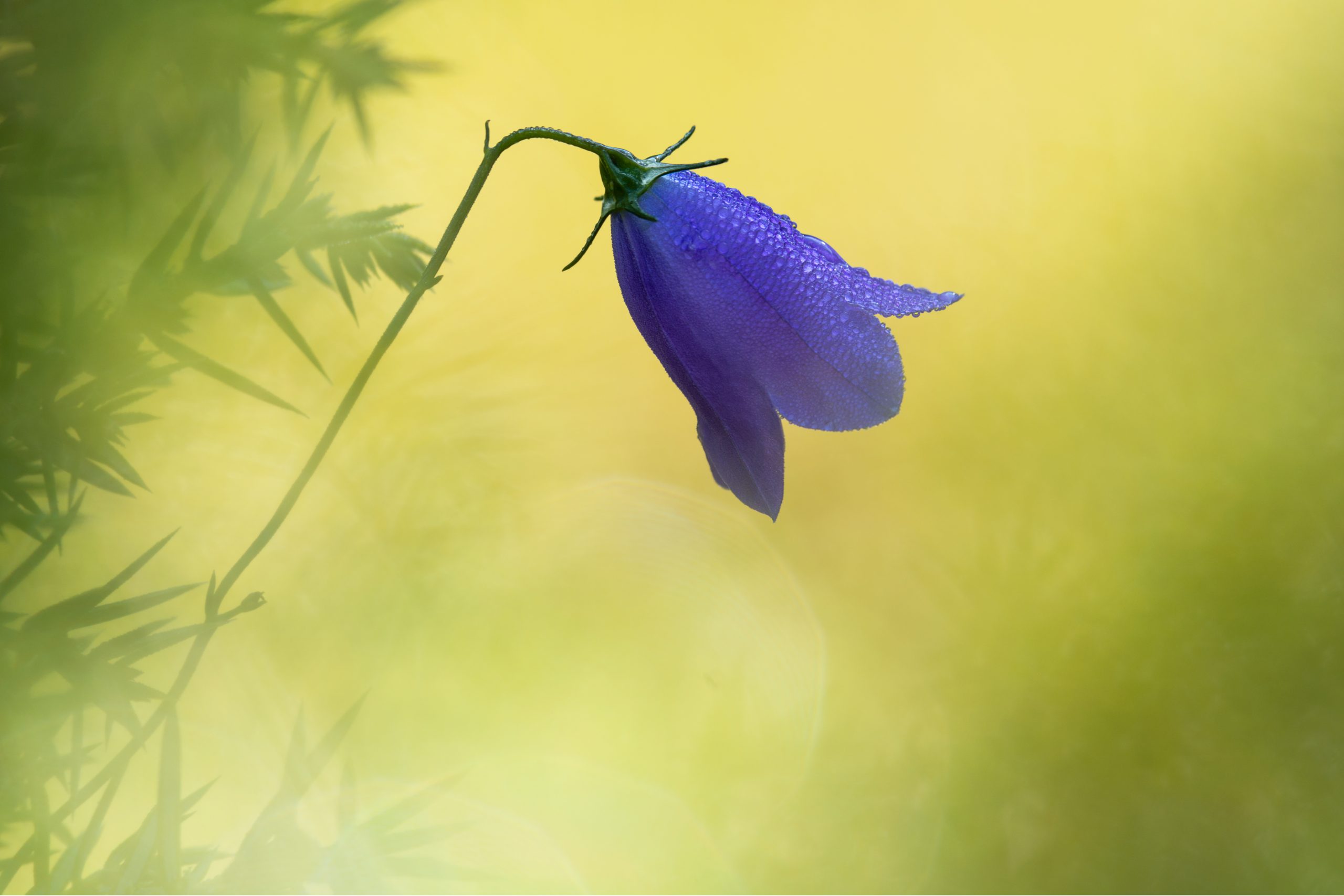
On the last day I had the mission to photograph a species that only exists in the Pyrenees and in the Cantabrian mountains, the Pyrenean chamois (Rupicapra pyrenaica). I went to the cirque de Troumouse expecting to at least see some chamois and to photograph marmots. Although that didn’t happen, I had the opportunity to photograph the mountains at the distance when sun was rising. Things do not always go as planned, but we should enjoy each moment and this morning was particularly pleasant. It was quiet and the landscape was devoid of human life, a truly wild place.
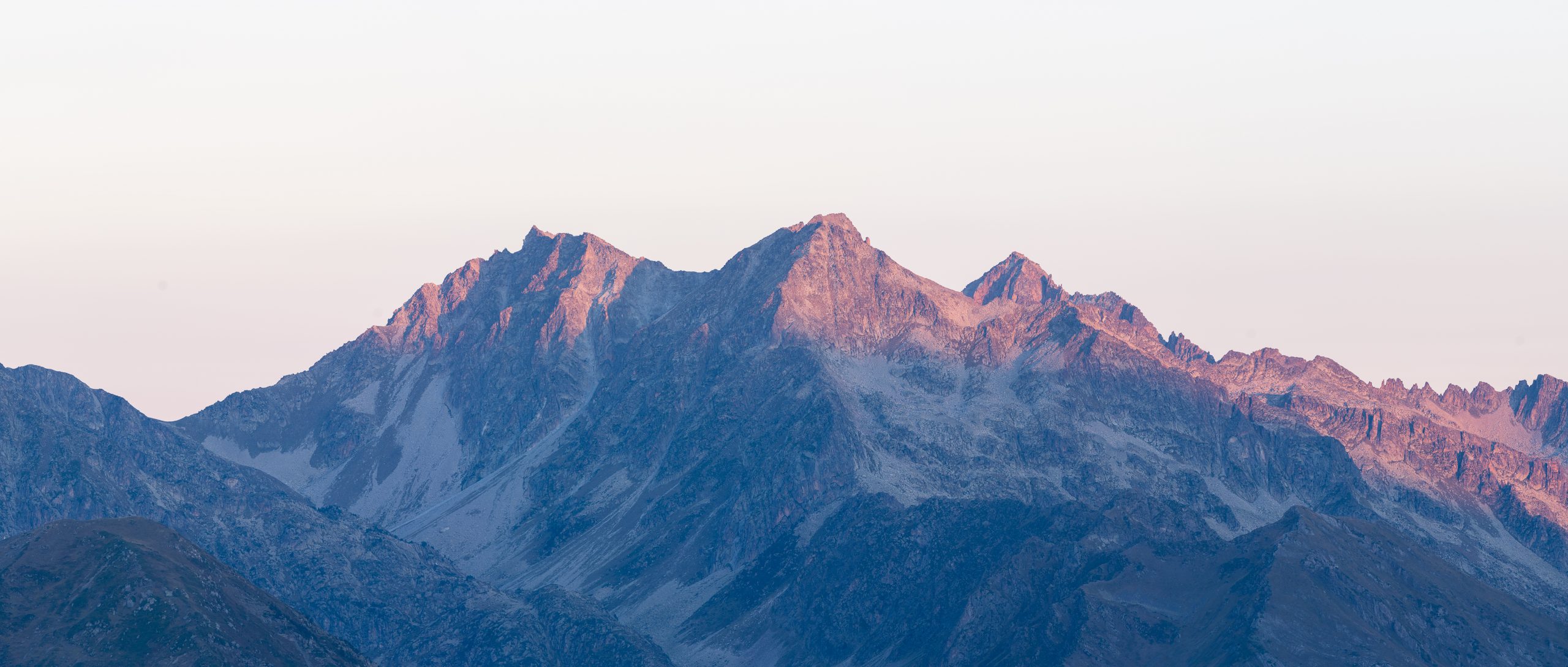
This trip had ups and downs and I even doubted of my abilities as a photographer, but in the end, everything was worth it and I am very pleased with the results. The most important, are the experiences I brought home and the beautiful places I got to know, everything else is secondary. Without a doubt this is a place to return to in the future!
Thank you for reading this article. If you have any questions or suggestions feel free to contact me.
